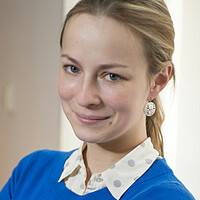Now that he's finished second in the freestyle ski slopestyle, Gus Kenworthy is on to a new quest: adopting four stray puppies he found living near the mountain-village media center, along with their mother.
The plight of Sochi’s stray dogs, reportedly culled in large numbers by Russian officials during Olympics preparation, has captured international headlines. Some dogs – though it’s not clear what percentage – were saved by a last-ditch effort to place them in impromptu shelters run by volunteers. At least five dogs now have their own personal advocate in the US Olympic silver medalist.
“Puppy love is real to puppies,” he wrote in a Twitter post above a photo that shows all four puppies on his lap. (The post predictably went viral.) He plans to keep one, and has future US adoptees lined up for the rest, he told USA Today.
It’s good news that Kenworthy’s competition is already behind him, since bringing a family of stray dogs from Sochi to the US might require a different kind of race – that of navigating the complicated bureaucracies of both countries.










